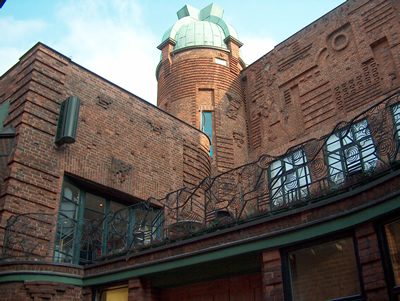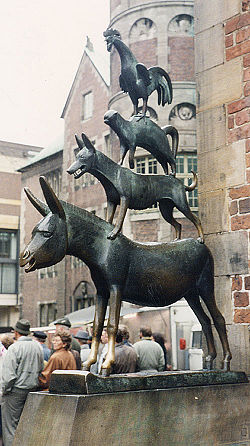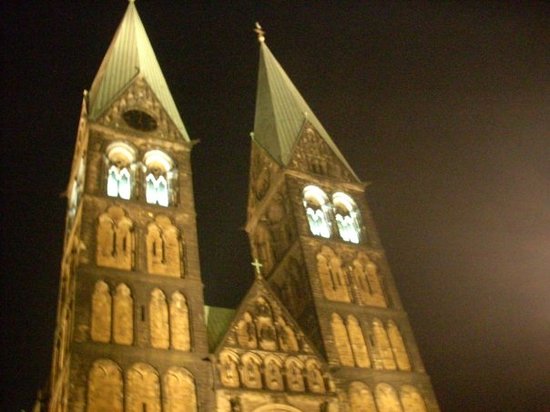I am very happy that I chose to
take German 110. At first I wasn’t very excited about taking the course, but
after the first day those feelings went away. Professor Roland made this class
very enjoyable by encouraging the students to be active in class discussions along
with the group presentations. When classmates weren’t giving presentations he
would lecture on the current topic. These lectures tended to be very
informative and sometimes quite comical. Throughout the semester we covered
many different topics. A few of the topics that I enjoyed learning about were
the 16 states of Germany, its history, its political parties and its culture. Along
with that, I enjoyed watching The Berlin
Calling, Baader Meinhof, and
reading the book, All Quiet on The Western Front.
Towards the beginning of the
semester we learned about the 16 states. Professor Roland let the class split
up into small groups and then present on a state. The state that my group
presented on was Bremen, which happens to be the smallest of the 16 states. The
rest of the class presented on the other 15 states which are Baden-Württemberg,
Bayern, Berlin, Brandenburg, Hamburg, Hessen, Mecklenburg-Vorpommern,
Niedersachsen, Nordrhein-Westfalen, Rheinland-Pfalz, Saarland, Sachsen,
Sachsen-Anhalt, Schleswig-Holstein, and last but not least Thüringen. A few
class sessions later we were told to have read the book called, All Quiet on The Western Front. This
book showed the struggles of the young German soldiers during the war and how a
generation was essentially lost due to the war. Along with reading this book, I
liked watching the movie Baader Meinhof.
Baader Meinhof was about the younger generation rebelling against everything
that they grew up with. They wanted their voices to be heard. In order to get
their voices heard they took part in doing acts of violence. It started out
with one act of violence and then that just escalated into bigger and bigger
acts of violence. Along with watching Baader Meinhof, I enjoyed watching the
movie, The Berlin Calling. This movie
was about a young talented music artist who goes on tour. While on tour he
abuses many drugs that in turn lead to many problems. Both of these movies kind
of go hand in hand by showing how the younger generation of Germany grew up. The
last topic that I would like to mention is the history of women in Germany. It was
very shocking for me to learn about how they were treated in the earlier years.
They were viewed as only being good for three things, caring for their
children, going to church, and cooking the meals at their homes. These are just
a few of the many topics that I enjoyed learning about in German 110.
With that being said, I am glad I
took this course. I learned a lot about the German culture. Before taking this
course I didn’t really see myself studying abroad anywhere during college.
However, that is no longer the case. I now have a strong desire to study abroad
in Germany. If everything works out financially, I am in hopes to be studying in
Germany for the fall semester of 2013.












